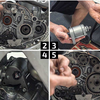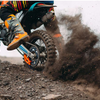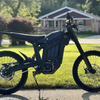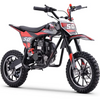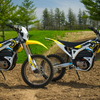What Is a Good Electric Dirt Bike? 6 Value Picks That Balance Power & Price
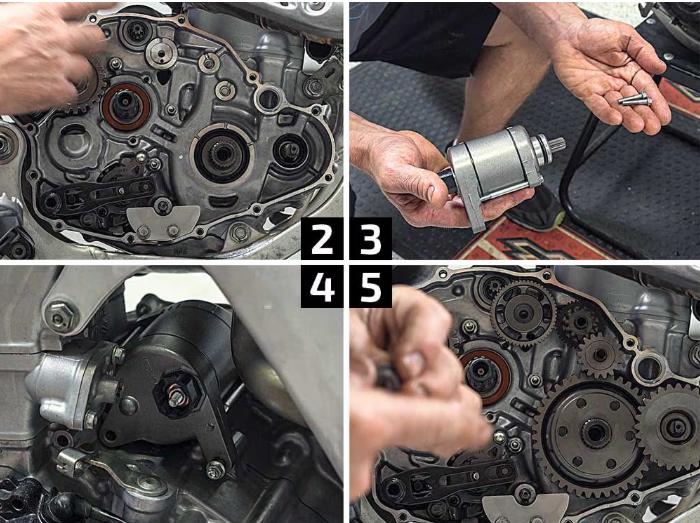
If you’re asking what is a good electric dirt bike, you want something that feels quick and confidence-inspiring without blowing the budget. A “good” pick balances five things: fit and weight, power delivery, real-world range, service/parts support, and price. Get those right and the bike disappears under you—leaving you with quiet torque and fewer maintenance chores than gas.
This guide simplifies the hunt. First, a fast checklist helps you evaluate any electric dirt bike in minutes. Then we highlight six value picks, each representing a sweet spot for different riders—from a low-risk youth starter to a lightweight 60V trail machine and a smart full-size option. To keep brand bias low, we describe categories and what to expect, with only light brand name use when useful for orientation. If you’re shopping for a child or a true first-timer, we include one neutral youth example so you can visualize sizing and reasonable speed before moving up.
Use this as your no-noise sorting hat: pick the category that suits your rider and trails, confirm the core specs with the checklist below, and you’ll land a good electric dirt bike—not just a fast one on paper, but a bike you’ll still love in six months.
The 90-Second Buying Checklist (use this before comparing prices)
Fit & weight: If you can’t control the bike at walking speed, you won’t love it on trail. Sub-130 lb machines feel playful for most adults; youth bikes should allow easy foot dabs.
Voltage & capacity: 36V = kids/entry; 60V = adult trail sweet spot; 72V+ = more punch and usually more weight/cost.
Range realism: Compare the brand’s steady-speed range (often at ~25 mph). Plan on ~60–80% of that number for mixed singletrack.
Brakes & suspension: Hydraulic discs and adjustable fork/shock matter more than another 2 mph of top speed.
Charging plan: Typical full charge is ~2–3 hours; some support quicker options. Faster charging = more laps in a day.
Support: Look for a clear parts shelf (pads, rotors, throttles, chargers) and written warranty/returns.
6 Value Picks (by rider type and budget)
1) Lightweight 60V Trail Bike (Best overall for most adults)
If you want a good electric dirt bike for after-work loops and weekend singletrack, this is the class to beat. Expect mid-40s mph top speed, ~1–2+ hours of real trail time (pace and terrain dependent), and curb weights that feel mountain-bike-with-a-motor light. The magic is controllability: instant torque, simple “twist-and-go” operation, and less fatigue than heavier full-size machines. Look for hydraulic discs, decent fork/shock adjusters, and a published steady-speed range so you can sanity-check claims. This category delivers the best fun-per-dollar for most adult riders.
Why it’s a value pick: playful weight, real parts ecosystem, and upgrade paths (gearing, tires, pads, faster chargers) without premium pricing.
2) 72V “Plus” Trail/Enduro (More punch without going full-size)
If your terrain is steeper, you’re a heavier rider, or you simply want headroom, the 72V class adds torque and stability. You’ll pay a bit more and usually gain some weight, but hill starts feel easier and high-speed sections feel calmer. Prioritize brakes and suspension—when power climbs, stopping and control need to scale with it. This tier suits riders who love the lightweight feel but want a stronger “second wind” on climbs or sand.
Why it’s a value pick: meaningful performance bump over 60V while staying simpler and cheaper than premium MX-oriented platforms.
3) Full-Size Off-Road Electric (Calmer at speed, bigger battery)
A full-size e-dirt bike gives you more watt-hours and a planted chassis for open desert, whoops, and long dirt roads. The extra mass reduces twitchiness at higher speeds and stretches steady-pace range. It’s not as flickable in tight trees as a lightweight 60V bike, but for big-field days it’s a comfortable, confidence-building choice. Check seat height carefully, confirm curb weight, and make sure you can source pads, sprockets, and tires easily.
Why it’s a value pick: you’re paying for stability and battery depth—not just a spec sheet number—so big rides feel easier and more consistent.
4) Premium-Lite, Not Premium-Price (Smart mid-tier components)
Some mid-priced models sneak in upgraded brakes, better fork cartridges, or a stiffer wheelset without the full premium price. If you ride frequently, these contact-point upgrades matter more than headline top speed. Look for 4-piston front calipers, adjustable rebound/comp on the fork, and a shock with usable clickers. If you can test ride, do it—suspension feel and brake power are what you notice most after the first week.
Why it’s a value pick: better hardware where you feel it every ride, while keeping price well below flagship MX electrics.
5) Good, Cheap Electric Dirt Bike (Youth 36V starter, supervised)
For kids or small first-timers, a 36V mini with front/rear discs and real suspension is the “good cheap electric dirt bike” lane that won’t overwhelm new riders. Expect roughly 12–17 mph for 350–500W motors and higher-teens mph for 1000W versions, always terrain and rider-weight dependent. Lead-acid packs are cheaper but fade earlier in a session; lithium variants hold speed better and often charge faster. Keep rides off public roads, stick to private property or family OHV areas, and supervise closely.
Why it’s a value pick: low seat height, manageable speed, simple controls, and parts you can actually buy make this the safest entry.
To visualize size and control layout while shopping, you can anchor “36V mini electric dirt bike” once to a representative youth listing with dual suspension and discs (colors/specs vary).
6) Refurbished or Open-Box (Stretch your dollar, still get support)
If you’re budget-sensitive but picky about components, refurb/open-box can unlock better brakes, lithium packs, or higher-output motors under your cap. Only buy with a written warranty, known serial, and confirmation that essential parts and the correct charger are included. Ask what was repaired or replaced and whether the seller load-tested the battery. This path is great for riders who want mid-tier performance at entry-tier prices.
Why it’s a value pick: real savings with less compromise—provided the seller’s support is legit.
Good Electric Dirt Bike Brands (how to think about names, not hype)

When researching good electric dirt bike brands, focus less on logo and more on:
Transparency: published steady-speed range, curb weight that includes the battery, clear warranty PDF.
Ecosystem: rotors, pads, sprockets, throttles, tubes/tires, chargers in stock.
Dealer/retailer access: ability to test, service, and get advice locally or through a responsive online shop.
Community: tutorials, setup videos, gearing tips, and third-party parts—healthy ecosystems make ownership easier.
Recognized names are helpful for resale and tutorials, but plenty of smaller brands deliver value if they’re transparent and supported. A “good” brand is one that helps you ride more and wait less.
Price Tiers at a Glance (so you set expectations correctly)
Kids 36V minis: ≈ $300–$900, ~12–17 mph, ~20–60 minutes per charge depending on chemistry and rider size.
Adult 60V lightweight: ≈ $3,000–$6,500, mid-40s mph typical, ~1–2+ hours trail time with sane riding.
72V trail/enduro: ≈ $4,500–$8,500, more punch and stability, weight and price rise accordingly.
Full-size off-road: ≈ $7,000–$12,000+, calmer at speed and bigger packs.
Premium MX-oriented: ≈ $10,000–$14,000+, track focus and top components.
Remember to budget for protective gear, spares (pads, tubes/sealant, lube, a spare chain link), and possibly a faster charger if your model supports it.
Range & Charging Reality (one minute of math)
Brands usually quote range at a steady speed (often ~25 mph). To translate that into hours for your riding, divide miles by 25 to get “perfect-world” hours, then multiply by 0.6–0.8 for real trails. If a bike lists 46 miles @ 25 mph, that’s 1.84 hours ideal; plan on ~1.1–1.5 hours on mixed singletrack. Charge times are commonly ~2–3 hours on stock chargers; some bikes support faster options. Faster charging ≠ worse for the battery when the charger is approved—heat is the enemy, so charge in a cool, ventilated spot.
Setup Tips That Make Any Bike “Feel Premium”
Dial suspension sag for rider weight, then add a click or two of rebound to calm chatter.
Brake bed-in matters: a few controlled stops from moderate speed will transform lever feel.
Right tires for the day: harder pack = lower-rolling treads and a few extra PSI; loam/mud = real knobs and lower PSI.
Chain care: a clean, lubed chain adds free range and smoother throttle feel.
Throttle mapping (if available): use mild or “eco” to connect sections, “sport” only where you need punch.
Small setup wins compound into a bike that feels planted and predictable—exactly what most riders mean by “good”.
Safety & Legality (so your great pick doesn’t become a headache)

Most electric dirt bikes—especially kids’ minis and 60V/72V trail platforms—are off-road only. They typically lack DOT lights, mirrors, horn, and tires, and they aren’t registered or insured for public roads. Ride on private property with permission, OHV parks, motorized trails in permitted areas, and MX tracks. If you truly need mixed road/trail use, look for a factory street-legal electric motorcycle or research your state’s conversion rules before spending on parts.
Conclusion
A good electric dirt bike is the one that fits your body and riding, pulls hard enough to make you grin, stops and turns with confidence, and is easy to keep running. For most adults, that’s a lightweight 60V trail bike with honest range numbers, hydraulic brakes, and usable suspension adjusters. If you need more punch or ride steeper terrain, 72V trims make sense; if you love long, open loops, a full-size off-road electric’s stability and bigger pack will feel worth it. For kids and first-timers, a 36V mini keeps speeds appropriate and builds skills without drama. Refurbished/open-box bikes are a smart way to climb a component tier while staying on budget—just insist on written support.
Use the checklist at the top before you compare prices. Confirm steady-speed range, curb weight, charge time, brake/suspension spec, and parts availability. Then set the bike up for your weight, pick tires for the day, bed in the brakes, and ride. Do that, and you’ll have more than a good electric dirt bike—you’ll have a bike that keeps you riding week after week, season after season.
Frequently Asked Questions
What is a good electric dirt bike for adults if I’m new to off-road?
A lightweight 60V trail bike is the safest bet. The weight is manageable, torque is instant yet controllable, and parts and upgrades are easy to find. Focus on brakes and suspension over peak speed.
What is a good cheap electric dirt bike for a child?
A 36V mini with real front and rear disc brakes, modest top speed, and a low seat height. Lead-acid packs are cheaper; lithium holds speed better and often charges faster. Keep riding supervised and off public roads.
Which brands are considered good without paying premium prices?
Brands and retailers that publish steady-speed range, list curb weight with the battery, provide a clear warranty PDF, and stock pads/rotors/chargers are the ones to trust. A healthy ecosystem beats a flashy logo.
How much should I budget for a good setup beyond the bike price?
Plan for protective gear, a few spare consumables, and possibly a faster charger if your model supports it. Those items transform day-to-day riding far more than a tiny top-speed increase.
How do I know if the range claim is realistic?
Use the brand’s steady-speed number as a baseline and multiply by 0.6–0.8 for mixed singletrack. If you routinely ride steep or sandy terrain, stay closer to the lower end of that window.
